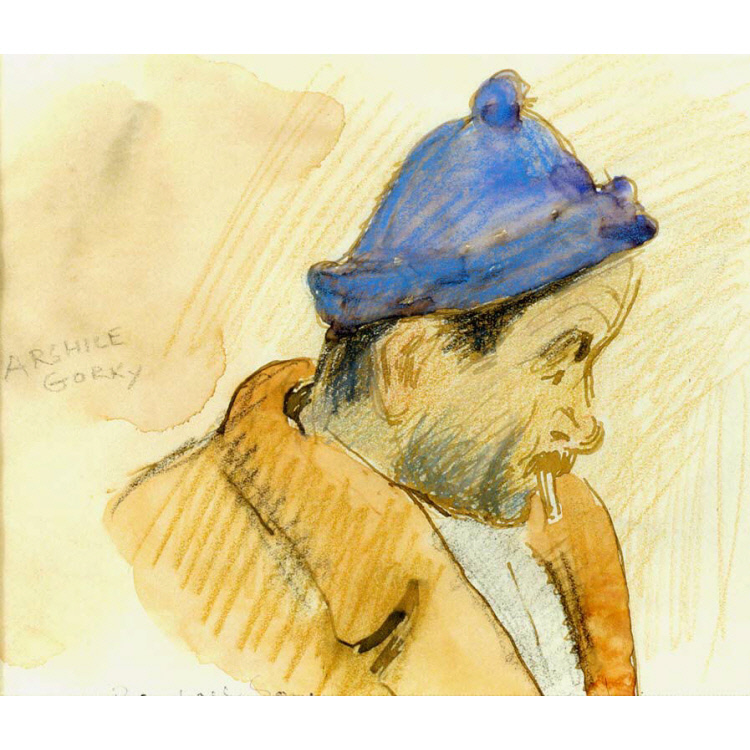Arshile Gorky
Born in Armenia, Arshile Gorky (whose real name was Vosdanik Manoog Adoian) endured a childhood of hardship and family tragedy during the Turkish invasion of his country. After his mother's death from starvation, he immigrated to the United States in 1920 and lived with relatives in New England before moving to New York.
Although Gorky had some art training, he was largely self taught. Most of his education was obtained by close study of the works of modern European masters on his frequent visits to museums and galleries and reproductions of their art in books and magazines. His early paintings were particularly indebted to those of Paul Cézanne and Pablo Picasso. During the 1920s and 1930s Gorky was producing still lifes in a modernist, nonrepresentational style, but he was also creating a series of affecting portraits of himself and members of his family—an autobiographical element in the artist's work that would be a hallmark of his mature paintings. In the 1930s Gorky was also attracted to Surrealism, particularly to the work of the Spanish artist Joan Miró.
Out of these modernist influences and his personal experience, Gorky created his own artistic synthesis, which would profoundly influence subsequent developments in American art, notably the rise of Abstract Expressionism. A series of tragedies—illness, a debilitating accident, a fire in his studio, and marital troubles—led a despairing Gorky to commit suicide in 1948 at the age of forty-four.
National Museum of American Art (CD-ROM) (New York and Washington D.C.: MacMillan Digital in cooperation with the National Museum of American Art, 1996







